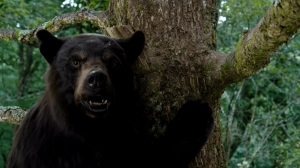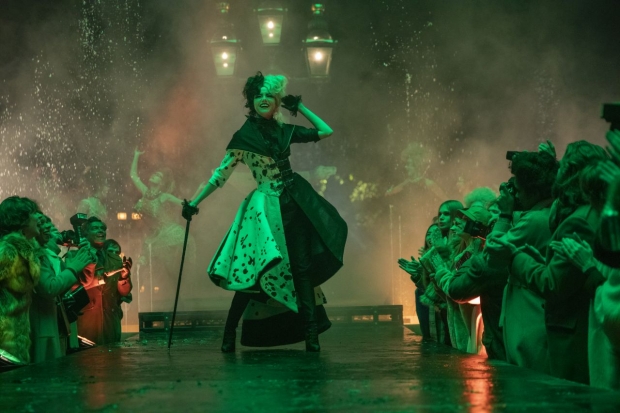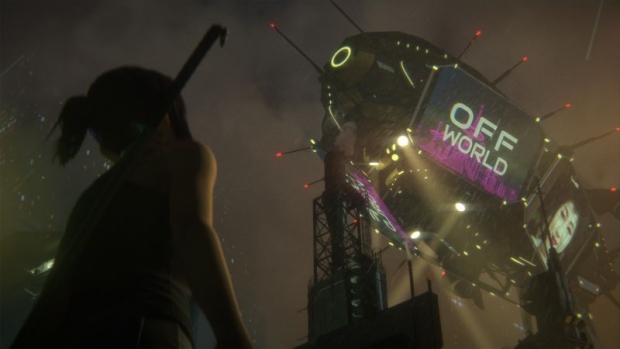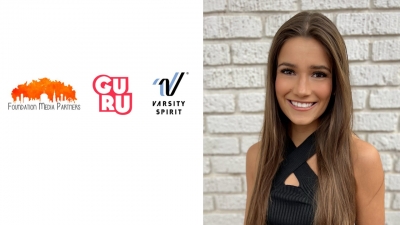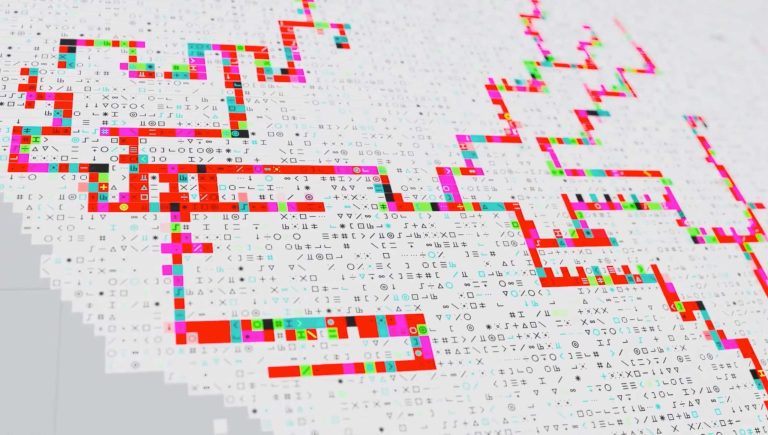As Hollander and his crew built Cokey’s 3D model, they also started building the animation rig inside the model, which allowed the animators to work on all of Cokey’s movements.
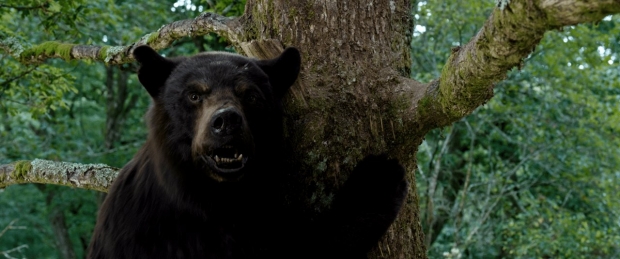
Which was good because cocaine is certainly not the only thing getting caught in Cokey’s fur. There’s also plenty of blood, guts and gore getting soaked up in the bear’s coat throughout the film.
Yet, Wētā VFX supervisor Robin Hollander says Cocaine Bear may be his and his team’s favorite project yet.
The gambit of motion reference included the typical climbing, eating, fighting, roaring, and all the usual actions of bears compiled with what animals look like coming back from vet appointments and post-tranquilization.
Hollander also notes that, should Banks make plans for any more stories with Cokey, the Wētā team would be more than interested.
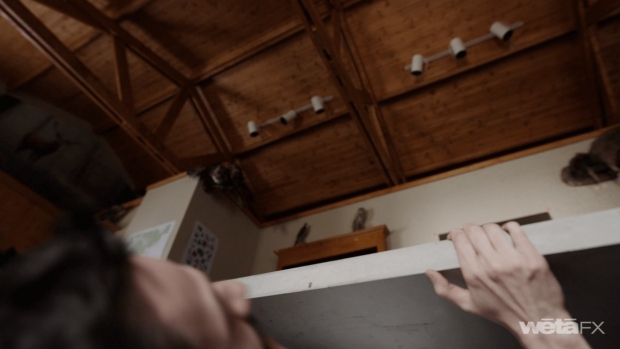

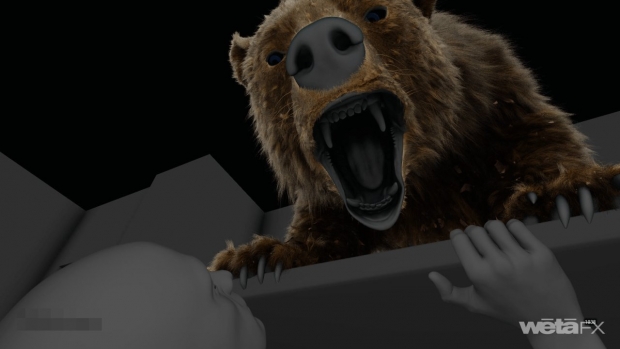
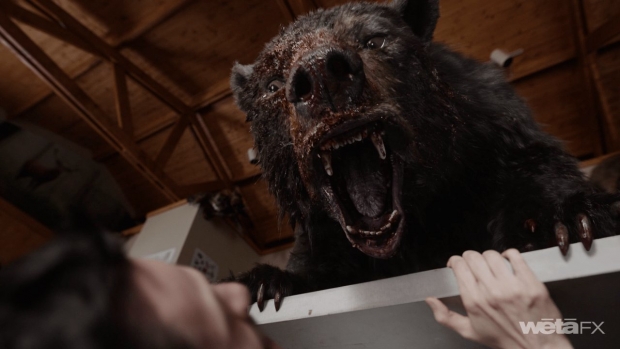
So, for each of Cokey’s costume stages, there would be a model update for groom changes, as well as a palette update.
“Our Stage One groom was nice and fluffy, where she’s just had a blow dry and a shampoo and looks pristine,” explains Hollander. “Stage Two had a little bit of clumping and blood in the face, but sort of localized, just around the snout and her forehead. Stage Three was blood over all her body, along with some leaves and twigs. That’s her at her worst, like after the ambulance chase or when she’s coming out of the visitor center. And then stage four was what we used in the waterfall scene, when she falls down and is clean, but totally saturated. I think having those different costumes really helped us sell the beats at the right time, and really sell the character.”
“It was an ongoing process,” says Hollander. “From the first to the last day, it was a constant refinement.”
One of Cokey’s best moments is toward the end of the film, where all the visual effects tricks really come to a head. She’s got the classic bear roar, her fur is wild and shining in the moonlight and her eyes are flaming with rage. Throw in the full moon in the background and the scene is, all together, rather badass.
That one thing being a coked-out bear.
For as many classic horror tropes as the film capitalizes on, Hollander says that, for him, the true horror of the film is in its unpredictability.
Victoria Davis is a full-time, freelance journalist and part-time Otaku with an affinity for all things anime. She’s reported on numerous stories from activist news to entertainment. Find more about her work at victoriadavisdepiction.com.
“We also had some grimmer references, like animals that were having seizures and strokes,” shares Hollander. “It was pretty hard to watch. But we needed to see it to get a sense of how their muscles twitch and react.”
Cokey, unlike many B monster movie predators, had to have personality, and it had to be able to switch from scary to silly, even lovable, on a dime. And even though the bear would be photoreal, she had to act in a way that was actually possible for a bear to act while loaded up with cocaine.
The film, produced by Universal Pictures, stars Keri Russell, O’Shea Jackson Jr., Christian Convery, Alden Ehrenreich, Brooklynn Prince, Isiah Whitlock Jr., Margo Martindale, and the late, great Ray Liotta, to which the movie was dedicated after his passing in May 2022.
“One of the questions members of our team keep asking is, ‘Is there talk of a sequel?’” says Hollander. “There’re some hints that there could be, and I know Jimmy Warden, the writer, has a few ideas up his sleeve. I don’t know if Liz has any plans for certain, but for sure we’d line up to do a project like this again.”
But Wētā also needed a base personality on which to hang Cokey’s character. Basically, they needed to find a bear that already held some of the traits that Cokey would have to match.
“We found some really cool references of Sun Bears and we figured it was a pretty good match,” shares Hollander. “They are in the bear family, they are a lot smaller, but they’re incredibly goofy looking things. They look like they’re coked up at all times. Their eyes are all over the place, their tongues are flopping around. Seriously, if you ever have a rainy afternoon, just go on YouTube and type in Sun Bears doing stuff.”
Within that framework, the team went out and did their due diligence, compiling info on bears they’d designed before, gathering references from Google images, Getty images, YouTube clips, and Instagram reels, in an effort to make a collage that would eventually become Cokey.
“It allowed us to focus on doing that one thing really well,” Hollander explains. “Everyone who worked on it was like, ‘I know this is a smaller movie, but can we do more?’ It was great to see that there was this appetite for it.”
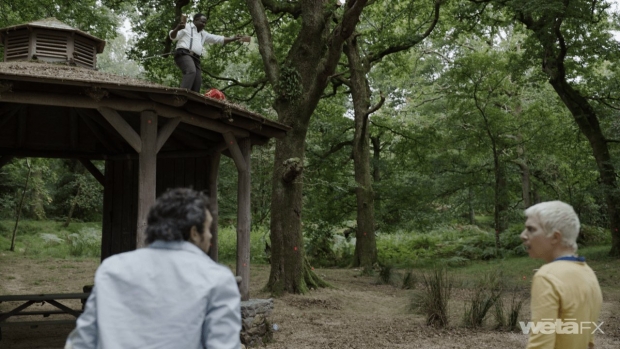
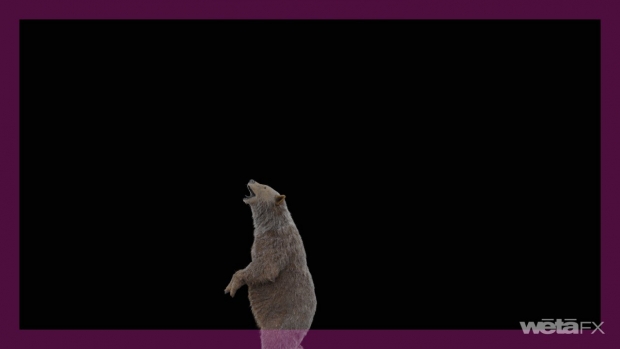
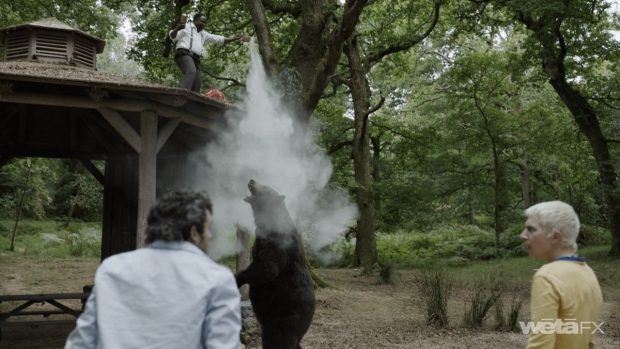
“Obviously, there’s lots of throwbacks and references to those classic horror beats, like American Werewolf in Paris, which you see pretty clearly in the waterfall scene when she’s roaring at the moon,” says Hollander. “But, inside the visitor center, you’ve got the slowness of the reveal. There’s just a little light coming over the snout and then you can see movement and then these flickering eyes. So finding the subtleties in each beat and making sure the horror that was needed on screen was eked out by us in the right measures, be it through look or through performance.”
“What made it so enjoyable – other than telling people that I worked on a movie called Cocaine Bear every day, and people not believing me – is how simple a project it was,” he says. “These days, you have big tentpole VFX movies, and there’s so much that is being done in VFX now, and it’s amazing, and it’s cool, and you can diversify. But this felt like an old-school VFX movie, to the point where there was 99.9 percent photography, and we just added this one thing onto the plate.”
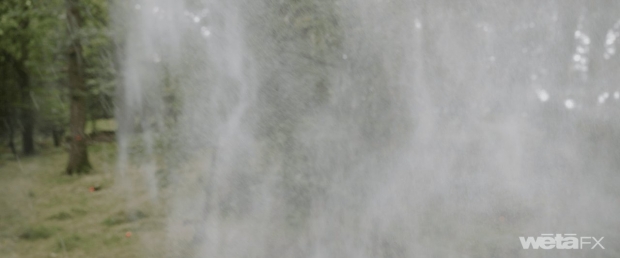
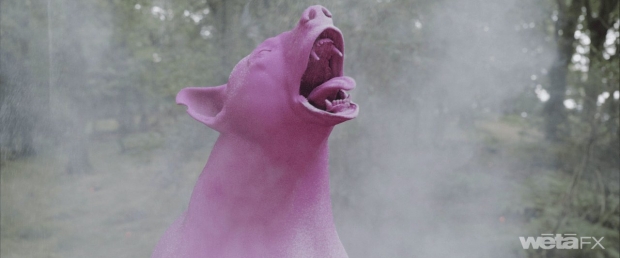

“Because if it looks real, but the bear is doing something that you’d never believe a bear could do, that can pull you out of a movie,” notes Hollander.
“Every time we found a reference that we thought could potentially lend itself to the performance, we would make sure that that animation rig could actually accommodate it,” explains Hollander. “What we ended up getting was a rig that had a massive range, and it just got better and better and better. I do think that is a big part of the success of the movie, because there’s so much subtlety in her performance, if you really take the time and look at it. Though, we understand that’s hard to do in the cinema, as you’re laughing and screaming in equal measure.”
Once the artists had their base, they started conducting motion tests, further developing who the character was.
Cocaine Bear is loosely inspired by the true story of “Cokey the Bear” a 175-pound American black bear who also became known as “Pablo Escobear” after fatally overdosing on nearly 75 lbs. of cocaine dropped by drug smugglers into the Tennessee wilderness in 1985. The bear was found dead in northern Georgia, stuffed to the brim with the drug.
He adds, “At the same time, they are really aggressive and ferocious when they have to be.”
“One of the shots that took the longest time for us to get right was the Cocaine Christmas shot, where the detective Bob sprinkles all the cocaine down from the top of the gazebo and Cokey’s sort of dancing under it,” says Hollander. “We spent all this time making sure that her fur looked amazing, and that everything on her had the right texture and the right jiggle, and then we realized we had to simulate cocaine landing on her fur.”
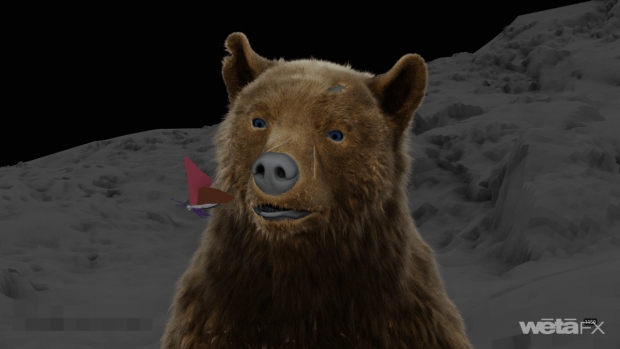
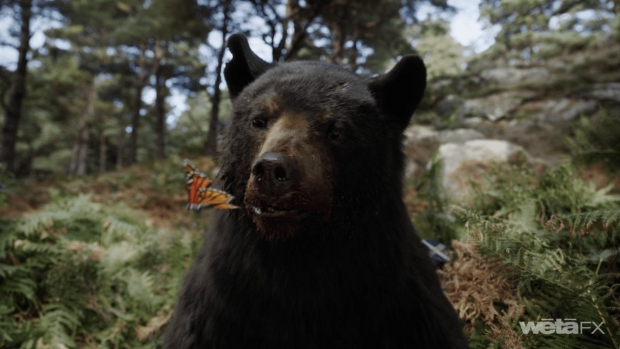
Hollander enjoyed working on the film so much that he’s gone to the theater to see it five times.
As recent Oscar, VES, Annie, BAFTA, and just about every other Award winner for their work on Avatar: The Way of Water, Wētā FX is well-known in the world of visual effects. Their vast portfolio consists of over 100 films and TV series, from The Last of Us and The Rings of Power to The Batman and Godzilla vs Kong, work that has racked up six Best VFX Academy Awards, seven BAFTAs, and two Emmys, to name a few.
“I’ve never seen a movie so many times,” he says. “I went to see it again just last week and it was at a smaller cinema. There were maybe 10 people in the screening and I thought, ‘This is going to be the test,’ because it was not the usual crowd for this kind of movie. And it’s not the usual environment. And they were absolutely pissing themselves.”
According to Hollander, “Cokey had four different ‘costumes’ as we called them, or stages to the way her hair was groomed. And we worked closely with our Textures and Look Dev department, which would create an update called The Palette, which defines how textures and the light interact. So, if we needed to show blood on the fur, we could go to them and say, ‘This chunk of fur is going to be clumped and we need to make a red texture with some highlights because it’s going to be bloody.’”
“The very first conversation we had with Liz, which set the tone, was her briefing us on what was important to her for Cokey’s personality,” says Hollander. “This is a bear who likes her drugs, she’s tired, she’s on the road home, and if you get in her way, god help you. A lot of people joked and asked if we used Scarface as our starting point. But, if we did that, it would have become a very different movie.”
“Liz kept reminding us, ‘This movie is not taking itself seriously. But we’re taking the work seriously,’” recalls Hollander. “It was a real breath of fresh air for everyone.”
But director Elizabeth Banks’ horror comedy – now showing in theaters and available on Prime Video and Apple TV+ – shows what might have happened if Cokey lived, weighed an extra 300 pounds, and went on a rampage searching for more cocaine, slaying whoever gets caught in her path.
Meanwhile, Banks was focused on how the cocaine behaved in the air.
Creating an entertaining, yet believable, 500-pound apex predator who is addicted to cocaine, Hollander admits, is extremely fun but certainly not easy. Despite the film’s title and scream-saturated trailer, Cokey (as the bear had come to be called on set) was not meant to be a blood-thirsty killing machine.
Once they had a rig with a wide enough range, it was just a matter of finding the right balance, dialing the bear’s wasted levels and aggression levels up and down according to each scene. It took a lot of trial and error, but it wasn’t the biggest challenge for production.
“At the end of the day, it is a horror comedy and, for me, horror is the undefinable and unknown, where you don’t know which way it’s going to go,” he says. “So you can make a bear that looks bad or crazy scary, but then actually have her do something really cute. That, for me, is where horror lies.”
He continues, “It wasn’t so much the falling bit as it was the settling of it on her fur. You’re dealing with a creature that has millions and millions of little individual fur strands. Just from a computational point of view, it’s really hard and really heavy.”

“We were constantly like, ‘But, look at the bear. How does the bear look?’ and she was like, ‘The bear’s fine. I’m not worried about the bear’” recalls Hollander. “That happens quite often with VFX. It’s the big stuff on screen that people think, ‘Oh, that would have been really hard.’ And not to undercut or undersell it, but it’s quite often the really small, minute stuff that makes the shot great. And sometimes in production, you focus so much on the big-ticket stuff that those smaller things fall on the wayside. But, again, because we had the luxury of having one main VFX asset, we had more opportunities to go back and refine those smaller things.”
